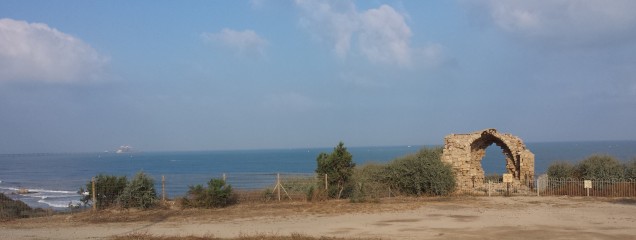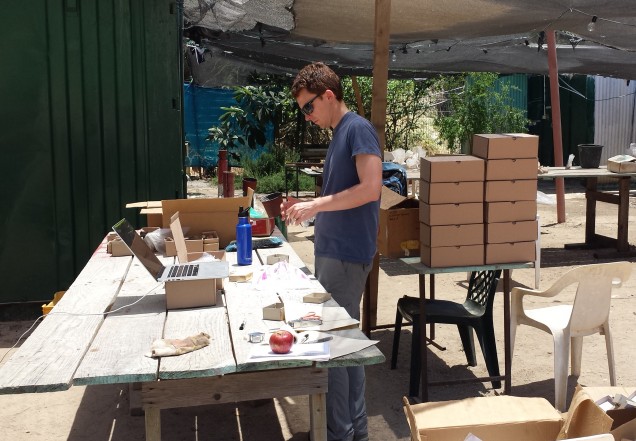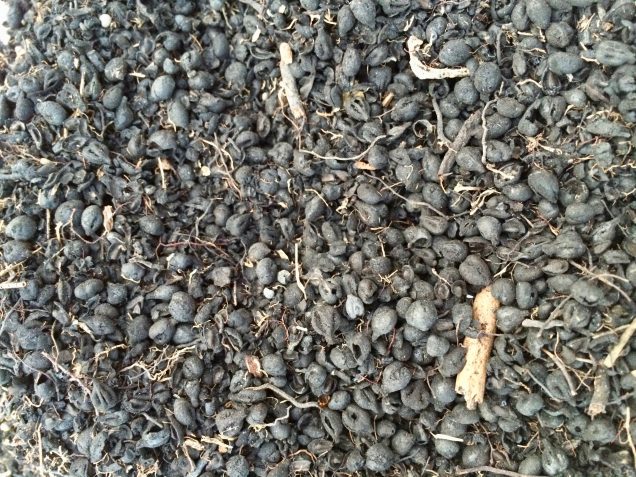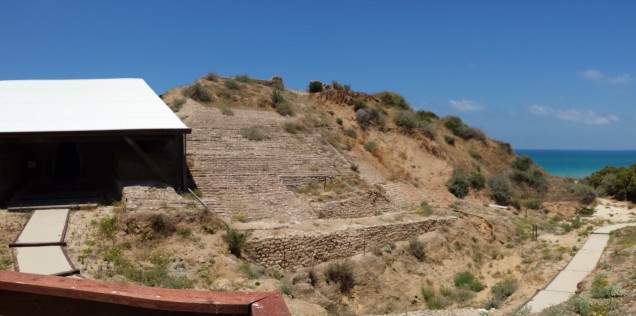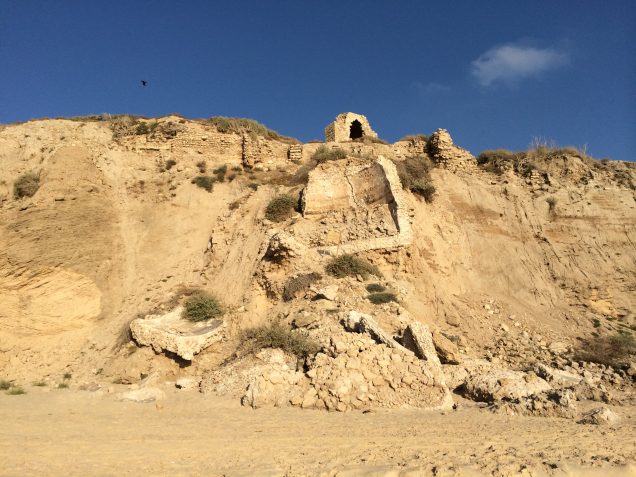Ashkelon
Project Overview
The ancient city of Ashkelon is strategically located along the southern Mediterranean cost of present-day Israel, and is characterized by its distinct D-shaped earthen ramparts that provided foundations for human enhancement during various occupation periods. The benefits of this location are attested to by its long occupation of nearly four thousand years, from the Middle Bronze Age through the Crusader Period (c. 2000 BCE–1280 CE). Throughout its occupation it was an important commercial port in the expansive trade networks that connected the Near East and wider Mediterranean region.
The Leon Levy Expedition to Ashkelon excavated the tell from 1985 to 2016, funded by the Harvard Semitic Museum and The Shelby White and Leon Levy Foundation. Punctuated by several study seasons, the main foci of the excavations have been the Middle Bronze Age occupation by the Canaanites, the Late Bronze and Early Iron Age occupations by the Philistines (one of the purported “Sea Peoples” that took to the Mediterranean region at the time), and Roman and Byzantine occupations. More recent work has focused on refining the occupational chronology across the site utilizing geoarchaeological methods, mapping the site using GIS, determining occupational densities across the tell through time, and, most notably, excavation of the first documented Philistine graveyard. Recent volumes detailing the Hellenistic and Islamic periods include environmental analyses of floral and faunal remains.
For more information, check out the project website.
Environmental Archaeology Lab Member Involvement
John M. Marston has been director of paleoethnobotany for the Ashkelon project since 2012. He developed a systematic strategy for taking soil samples for flotation during excavation, as well as a sample processing protocol utilizing the project’s FloteTech machine. Kathleen Forste began her involvement in 2014, and returned in 2016 as an assistant staff member during the final season of excavation. She used botanical material from the Early Islamic period for her dissertation project at Boston University. Marston and Forste, together with Kali Wade, worked to improve storage conditions on site in 2017. Marston and Forste also trained dozens of excavation volunteers in paleoethnobotanical methods of flotation and curation of samples, as well as in basic identification of plant remains.
Related Publications
2021
Marston, John M., and Kathleen J. Birney. Hellenistic agricultural economies at Ashkelon, southern Levant. Vegetation History and Archaeobotany online before print.
Marston, John M. Archaeobotany at Hellenistic Ashkelon. In Ashkelon 9: the Hellenistic Period. Edited by Kate Birney, in press. Harvard Museum of the Ancient Near East, Cambridge
2019
Forste, Kathleen M., and John M. Marston. Islamic and Crusader era agriculture at Ashkelon. In Ashkelon 8: The Islamic and Crusader Periods. Edited by Tracy Hoffman, pp. 649-669. Harvard Semitic Museum, Cambridge.
Related Presentations
2021
Forste, Kathleen M., and Deirdre Fulton. “A Specialized City: Fatimid-era agriculture at Ashkelon” Paper presented at the Society for American Archaeology Annual Meeting.
2018
Marston, John M. “Rural agricultural strategies in the Roman eastern Mediterranean” Paper presented at the Annual Meeting of the American Schools of Oriental Research
Forste, Kathleen M. “Archaeobotanical evidence of orchard production at Early Islamic Ashkelon.” Paper presented at the American Schools of Oriental Research (ASOR) Annual Meeting
Forste, Kathleen M. “New archaeobotanical evidence of Early Islamic agricultural economy at Ashkelon and Caesarea Maritima.” Paper presented at the European Association of Archaeology (EAA) Annual Meeting
2017
Marston, John M., and Kathleen J. Birney. “Hellenistic agricultural economy in the southern Levant: new evidence from Ashkelon” Paper presented at the Annual Meeting of the American Schools of Oriental Research
2016
Marston, John M., Deirdre Fulton, and Kathleen M. Forste. “Animal and plant economies at Islamic and Crusader Ashkelon” Paper presented at the Annual Meeting of the American Schools of Oriental Research
2015
Forste, Kathleen M., and John M. Marston. “Investigating economic and social impacts of agricultural production and consumption at Islamic Ashkelon” Paper presented at the Annual Meeting of the American Schools of Oriental Research
Hoffman, Tracy, Kathleen M. Forste, and John M. Marston. “New evidence for agriculture and economy at Crusader Period Ashkelon” Paper presented at the Annual Meeting of the American Schools of Oriental Research
Forste, Kathleen M., and John M. Marston. “Paleoethnobotanical investigations of the economy of Islamic Ashkelon” Paper presented at the 80th Annual Meeting of the Society for American Archaeology

